How many calories should I eat in a day?
We get a lot of people who ask us questions about our nutrition and how we track our calories and macros. There are plenty of ways to dial in your nutrition that don’t have to do with tracking calories, but for those who are interested, here are some ways to determine your maintenance caloric intake.
Get an RMR Test
If you want to go the more scientific route you can get an actual RMR test. RMR stands for resting metabolic rate. This means how many calories your body burns at rest, so it does not take into account your activity throughout the day. So, if you were to lay in bed all day this would be the amount of calories your body would need to survive if it was just resting.
However, to find a credible provider for this test is not usually accessible to the general population. You may have to do some research on where you can find this type of test locally. Sometimes local health clubs will have a certain time where they have someone come in and perform these types of metabolic tests. Depending on where you live, you can possibly reach out to a university to see if you can volunteer with someone from their exercise science department so they can perform an RMR test on you. A lot of times students need practice hours with this type of test so likely they would likely be open to doing it.
If you decide to go this route, you will have to take into account your activity level throughout the day including your workouts and add in how many calories you burn daily to your RMR. So, you will still have to track those factors.
Find an online calorie calculator
Now, before you knock this idea, let us explain. Yes, generally these online calculators overestimate the amount of calories they give to each individual person. However, it can give you something to follow for 1-4 weeks to see if your weight is going up, down, or stabilizing. If it is steady, then congrats – you have found your maintenance calorie range. If your weight starts to go up, then you can drop the calories down about 50-100 and see if your weight stabilizes for the next couple of weeks. You can repeat this process until you find your maintenance calories. This is a good option for those of you who aren’t necessarily focused on aesthetics and don’t mind if the scale goes up during this period of time of finding maintenance.
The best and most realistic way to find your maintenance calories is to TRACK EVERYTHING.
Let’s break that down.
Track everything – your food, your activity (workouts), your water, your steps (which contribute to your NEAT = non exercise adaptive thermogenesis) – for at least a week. We recommend more than that to really get an accurate depiction of your weight fluctuations. This holds true especially for women due to fluctuations in weight throughout our cycles.
The goal of this is to find a calorie range where your weight doesn’t fluctuate up or down. This is important because it will give you an accurate depiction of the rate of your metabolism.
To get an accurate calculation, you will have to be completely honest with yourself when you write your food down. This means that when you go out to eat on the weekends you need to track all of what you ate including any alcoholic beverages you consume as well. People tend to underestimate what they think they are eating throughout the course of a day, but those little snacks and bites here and there can add up to a lot of extra calories. A lot of times people aren’t completely honest with themselves when taking this approach so honesty is very important here.
Tips on how to track calories
Tracking your food
The easiest, most efficient way to do this is to find an app where you can plug in your food. (A good, free app is MyFitnessPal), In order for this to be successful, you will have to know the amounts of the foods you are consuming. For example, sometimes people “eyeball” peanut butter and think they’re only eating one tablespoon, when in reality it is more like 3-4 (check out our peanut butter reel here). Those calories add up and it is important to know that; especially if you are eyeballing food on a consistent basis. So, when you are trying to find how much you’re eating, it is important that you measure and weight your food. A quality food scale is a very helpful tool to have in the kitchen.
Tracking your workouts
This will allow you to see, on average, how much volume and intensity are in your workouts/program and the effect that has on your weight fluctuations throughout the week. For example, if you have a high volume lower body day you will most likely have high inflammation the day(s) after, so you will probably see the scale go up for a day or two. An easy way to do this is to write your workout in the notes app on your phone so you can have that reference on hand.
Tracking your water
Most athletes and people who train regularly are conscious about the amount of water they are consuming and get more than enough to stay hydrated. Some days you might find you get more than others and if, for example, you end up getting less on a day you are eating higher sodium foods your weight will probably be up the next day. An easy way to track is to just carry around a water bottle and figure out how many of them per day you need to hit your target.
Tracking your steps and overall NEAT
You will want to know how much you are moving throughout the day because it can tell you a lot about how many calories your metabolism can handle. If you are moving frequently, you will be able to eat more. If you are pretty sedentary for most of the day, you will have to eat less. However, there are certain situations where this may not be true. This is especially important if you find that your maintenance calories are very low and your NEAT is very high. In this case, you will most likely need to reverse diet. We recommend you not doing any additional cardio during this time of finding your maintenance because you want to see where you’re maintaining your weight without adding any additional activity – that way when it comes time for you to cut weight you can use cardio as a tool instead of as a crutch.
Tracking your weight
To get the most accurate reading of what your weight looks like for the week, weigh yourself 3-4 x throughout the week and at the end of it, add those numbers up and divide by the number of days tracked (take an average). This will give you a more accurate idea of your weight fluctuations for the week rather than just weighing in on the last day.
Are you ready to take your nutrition journey to the next level? Tune in to our podcast, “Stronger than your Boyfriend,” for expert insights, then join our personalized training and nutrition program! Whether you need workout advice or nutritional guidance, we’re here for you.



